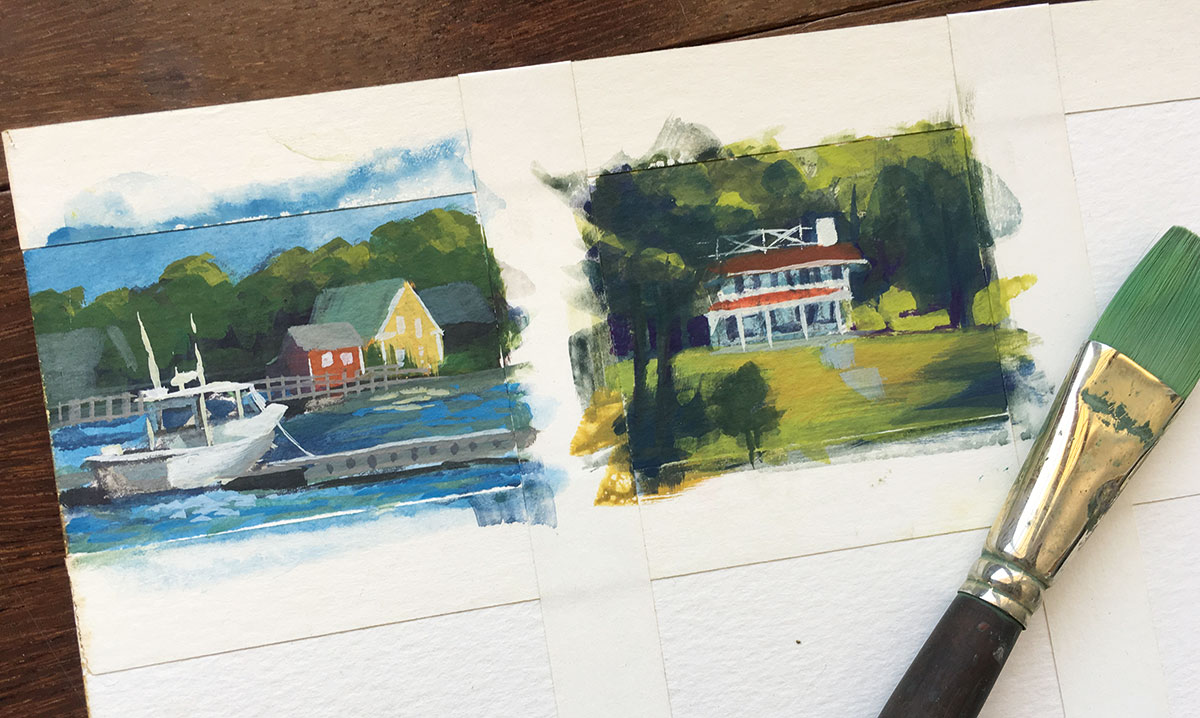5 things you can do if someone rips off your work
What do you do if someone helps themselves to your artwork and uses it without your permission – and without paying you? Our five-step guide will set you on the right track.
We know the feeling. First inquisitiveness: that looks a bit like my work. Then disbelief: that is my work! Finally, rage: I will bludgeon you to death with a Cintiq!
Your work's been ripped off. It happens and it's far more widespread than it should be, with businesses, stock libraries and even individuals misusing other people's design work. Here's what to do (put down the Cintiq).
01. Say hello
If you notice your work being used without your permission, then the first thing to do is make sure whoever is doing so is made aware of the infringement. So call them and tell them.
Remember that small businesses and other brands might unwittingly have paid for work that rips you off, so state that you believe your work is being infringed and request further information.
If the infringement is on a showcase site or even a stock seller, there will be a reporting function on the site. List your complaint, give a take down notice, and link to your original piece if possible.
02. Prove your case
Take a read of the Digital Millennium Copyright Act (DMCA). It's not the most exciting paper, but it's short and to the point and will equip you with vital information on what infringement consists of and what rights you have under this worldwide Act.
The DMCA protects you regardless of whether your work is copyrighted or officially registered, but it also lays out the principles for proof of ownership – knowing that you have the original files, date of creation proof, or other proof of ownership makes any direct legal challenge a lot easier and safer.
Daily design news, reviews, how-tos and more, as picked by the editors.
03. Use the DMCA
If your initial contact and appeal for a take down goes ignored, follow up with proof you know what you're talking about. The DMCA protects you. Quote it using a template (the ever excellent Von Glitchka is a vocal supporter of designers' rights, and has a free template you can use), clearly identifying yourself, your work and the violation.
The more elements of the DMCA you can cite as proof of ownership (list them out: the original files; email receipts for font licences or stock imagery; correspondence with a client), the stronger your case so do your homework and prove you're not messing about.
04. Call in the lawyers
With no other options left it's time to make a call to a lawyer. You need to find someone appropriate to the type of action you're bringing, and specific to the violator: is it a business ripping you off or an individual?
Are you suing for lost earnings, or simply a cease and desist? Most importantly, though, you need a legal representative who is versed in multimedia and creative copyright laws, and who is affordable.
Prepare all of your proof and request a quote and consultation, by the end of which you should have a clear idea of how likely you'll be to succeed in your action, and how much it will cost you.
05. List your demands
If your work is being used commercially, for the financial benefit of someone else, then you're missing out on earnings that you are entitled to a share of. This is where a good copyright lawyer is essential, as your demands may need to include costs and damages.
For example, you could offer to settle for a buy-out fee, or for a percentage of any revenue earned by the person or business that's ripping you off. Your legal representative will help you shape this, but don't be greedy and remember your primary objective – to get the violator to stop using your work.
Words: Tom Dennis
Illustration: Andrew Groves
Liked this? Read these!
- Useful mind mapping tools for designers
- Download the best free fonts
- The ultimate guide to logo design

The Creative Bloq team is made up of a group of art and design enthusiasts, and has changed and evolved since Creative Bloq began back in 2012. The current website team consists of eight full-time members of staff: Editor Georgia Coggan, Deputy Editor Rosie Hilder, Ecommerce Editor Beren Neale, Senior News Editor Daniel Piper, Editor, Digital Art and 3D Ian Dean, Tech Reviews Editor Erlingur Einarsson, Ecommerce Writer Beth Nicholls and Staff Writer Natalie Fear, as well as a roster of freelancers from around the world. The ImagineFX magazine team also pitch in, ensuring that content from leading digital art publication ImagineFX is represented on Creative Bloq.
